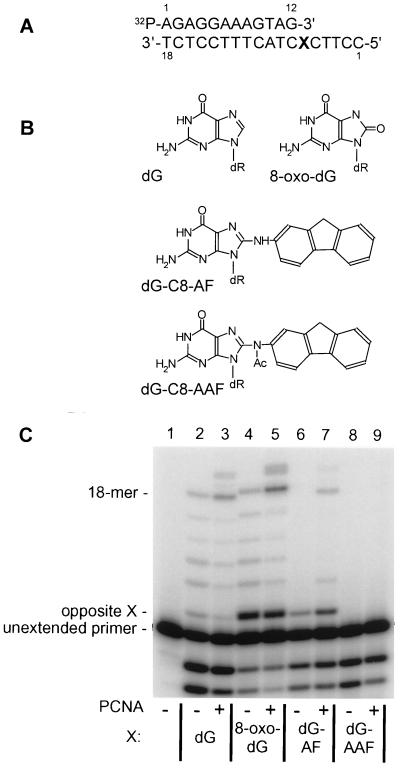Figure 2.
Effect of PCNA on bypass from a standing start of chemically defined template lesions by pol δ. Incubations were formulated as described in Materials and Methods and in the legend to Fig. 1, but contained 32P-labeled 18–12-mer as template-primer. (A) Structure of the 32P-labeled 18–12-mer template-primer used in all incubations. X, template position 6, indicates the position of either dGMP or the several chemically defined lesions tested. (B) Structure of dGMP and the three chemically defined template lesions studied. In all, dR indicates the linkage to deoxyribose that is in turn coupled to phosphate moieties in a standard phosphodiester linkage characteristic of DNA. (C) After incubation, pol δ reaction products were subjected to standard denaturing PAGE followed by autoradiography. Lane 1, incubation contained no pol δ; lanes 2–9, all incubations contained purified pol δ and calf thymus PCNA as indicated. The template nucleotide at position X is also as indicated. The migration position of an 18-mer standard is indicated to the left of the autoradiogram as are migration positions of unextended primer and primer with a single nucleotide incorporated opposite template position X. Evidence of pol δ-exonuclease is seen in all lanes where polymerase was present during the incubation.

